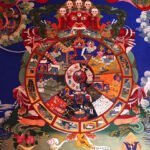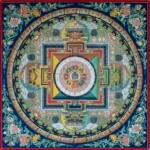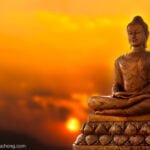“You will not be punished for your anger; you will be punished by your anger”
—Quoted by Buddh
More than 2500 years ago, a remarkable figure was born in the kingdom of Kapilavastu, which is now known as Lumbini in southern Nepal. This extraordinary individual was none other than Prince Siddhartha Gautama, who would later become known as Gautama Buddha. His birth was celebrated with great joy throughout the kingdom, but unfortunately, his mother, Queen Maha Maya, passed away shortly after giving birth.
Despite being born into royalty, Gautama Siddhartha felt a deep calling to explore the world beyond the confines of his luxurious palace. He yearned to understand the true nature of life and human suffering. In an act of great humility, Siddhartha disguised himself as a servant and ventured out into the world. During his travels, Siddhartha encountered various forms of suffering that deeply impacted him. One evening, he came across an old man, a dying man, a man afflicted by a terrible plague, and finally, a lifeless corpse. Witnessing these harsh realities opened his eyes to the inherent suffering that accompanies human existence. Siddhartha realized that material wealth and worldly pleasures could not provide lasting happiness or fulfilment.
Deeply moved by these experiences, Siddhartha resolved to seek a higher truth that could alleviate the suffering he witnessed. He embarked on a journey of intense self-reflection and meditation, eventually finding himself beneath the shade of a sacred Pipal tree. It was there, in deep contemplation, that he attained enlightenment and became the Buddha, which means “the awakened one.”
Buddhism – Teaching of Buddha
The teachings of the Buddha, known as Buddhism, were born out of his profound insights into the nature of existence. He preached his first discourse at Deer Park, sharing his newfound wisdom with the world. His teachings resonated deeply with people, and Buddhism gradually spread throughout India, Southeast Asia, Sri Lanka, and Japan.
In present-day Sri Lanka, Buddhism remains a significant aspect of the country’s religious and cultural identity. The original teachings of the Buddha continue to be followed and practised, providing guidance and solace to countless individuals seeking spiritual enlightenment.
After the Buddha’s passing, his devoted disciples gathered in the city of Rajagrha to compile the Buddhist holy canon. This sacred text is divided into three parts: Vinaya, Sutras, and Abhidharma. The Vinaya contains rules and regulations for monastic life, while the Sutras consist of the Buddha’s discourses and teachings.
Abhidharma
The Abhidharma delves into the philosophical and psychological aspects of Buddhism. It is essential to note that the Buddha was not the only enlightened being in history. Before him, other Buddhas known as Tathagathas had also graced the world. These enlightened beings paved the way for the identification of Bodhisattvas, compassionate beings who strive to aid others in reducing their cycle of rebirths and achieving liberation.
Bodhisattvas are revered and prayed to because they possess the ability to transmit the strength and guidance that seekers of enlightenment yearn for. The Buddha also provided valuable insights into the stages that mark an individual’s life.
He outlined twelve key milestones, beginning with the discovery of the five senses and culminating in the establishment of a family and the acquisition of material possessions. However, the Buddha emphasized that life is not merely a linear progression but an uninterrupted cycle of births and rebirths. Each life presents an opportunity for personal growth, knowledge, and the cultivation of love and generosity. The conscious awareness bestowed upon us at birth can be nurtured and enriched through the pursuit of knowledge, compassion, and a deep sense of humanism.
By engaging in positive actions and speaking words that promote goodness, we generate positive energy that aligns us with the divine or the ideal of humanity. Conversely, negative actions and harmful words align us with the animalistic tendencies within us. Furthermore, the Buddha asserted that our souls leave an indelible imprint on the spirit of future generations. This imprint ensures that our essence continues to exist even after death, transcending the limitations of mortal existence. In this way, it can be said that our soul does not truly die but lives on through the legacy we leave behind.
In conclusion, the story of Gautama Buddha is a testament to the transformative power of self-discovery and spiritual enlightenment. His teachings continue to offer solace, guidance, and a path towards ultimate liberation from the cycle of suffering. The profound insights he shared have touched the lives of countless individuals throughout history, spreading the message of compassion, wisdom, and the pursuit of inner peace.
















